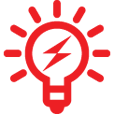Een vergelijking van de resultaten verkregen via Google Scholar en de zoekresultaten op dezelfde trefwoorden via een publiek toegankelijk wetenschappelijke database laat zien dat Google bij lange na nog niet alle informatie heeft ontsloten.
Een voorlopige conclusie, getrokken door Peter Jacso van de Universiteit van Hawaii is als volgt:
Google indexed the full text of the digital archives fed to it directly by 29 scholarly publishers, and a number of preprint servers and digital facilitators’ sites which host thousands of scholarly journals. Preliminary tests have shown that Google Scholar often retrieves far fewer unique items than the native search engines of the publishers. On the positive side, Google Scholar links to citing references if the document was cited by journals indexed in Google Scholar, and provides the immensely useful citedness score of the documents.
When Google Scholar has more “hits” for a query, they often turn out to be duplicates and triplicates (not always displayed adjacently) with a separate hit for the TOC entry, the abstract, the PDF file and (if available) the HTML file. Although their URLs are slightly different, they take you to the same spot in the archive. These are redundant and confusing, well illustrated when searching the IoP archive in the collection above.

